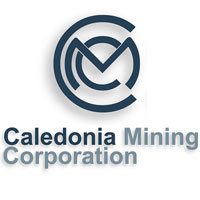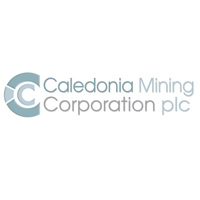Caledonia Mining Corporation (LON:CMCL) Chief Financial Officer Mark Learmonth caught up with DirectorsTalk for an exclusive interview to discuss entering into a 6 month cap and collar hedge, the reasons why and how it de-risks the company
Q1: Caledonia Mining recently announced that it’s entered into a 6 month cap and collar hedge, could you explain what that is for us?
A1: It’s a bit different from a regular hedge I guess but it’s absolutely not a forward sale of gold. So what it is is a series of put and call transactions but as a package what they do is they provide a floor price on the gold that we’ve hedged. So we’ve hedge 15,000 ounces of gold over 6 months, and it provides a minimum price for that gold of $1,050 an ounce so if the gold price fell below $1,050 an ounce, the arrangements we’ve put in place would see us get paid to the extent that there’s a shortfall below $1,050. At the other end of the spectrum, if the gold price is higher than $1,080 an ounce we get the full price participation in the excess over $1,080 so for the sake of argument, at the current gold price of $1,200 an ounce that means that we still collect $1,200 an ounce on the gold, having said that but we do incur a fee of approximately $30 an ounce to put this arrangement in place. To be absolutely clear, this doesn’t cap the upside; if the gold price goes to $5,000 we still get $5,000, it’s actually like an insurance product which means it gives us, for a value of $30 an ounce, it gives us downside protection on the gold price. That’s the best way I can explain it, there’s a cap and a collar within that range of $1,050 and $1,080, we get full price participation above $1,080 and we get a guaranteed price of below $1,050.
Q2: So why have Caledonia Mining entered into this hedge?
A2: Well we’re continuing to spend a lot of money so this year we’ll spend nearly $14 million on the central shaft and on other capital investments projects that we’re working on and that’s actually slightly lower than we’d indicated last year. It’s slightly lower because we managed to bring forward some of the capital items that we were going to put just later, we brought them forward into 2015 because we got such goods prices, seemed a shame not to take advantage of that. So we’re continuing to spend a lot of money, we continue to pay a dividend of 4.5 US cents a year, we’ve got plenty of cash to spend. We have seen the gold price be very volatile so with the recent strength of the gold price it meant that we were able to lock in a price of $1,050 which is the price that we’ve used for our internal projections, we can actually lock that in, still get full upside price participation above the higher gold price of $1,080 but because the gold price has moved up, the cap and collar spread narrowed quite significantly and we were able to lock in a minimum gold price of $1,050 which actually provided significant downside protection in case the gold price fell to below $1,050. The reason we’ve done this is the gold price is stronger, and that’s good and we hope it stays stronger for longer, but in this time of enormous market volatility, both in equity markets and commodity prices, we don’t know where the gold price is going. All we know is we’ve got to protect our cash position, we’ve got to continue to spend on the capital projects that we’ve embarked upon, there’s no use leaving them half-finished or three quarters finished or 90% finished and we want to maintain the dividend. So we could do it, the market was moving in our favour and so we took the opportunity to lock in that lower price and give ourselves that full price protection for a relatively modest spread.
Q3: How does it de-risk Caledonia Mining Corporation?
A3: It does significantly de-risk the company. Without the hedge our breakeven gold price was approximately $900 an ounce, having put the hedge in place our breakeven gold price is now about $820 an ounce so it does significantly de-risk us. By breakeven, I’m assuming that we continue to do everything that we’re planning to do, continue to pay the dividend so it would mean that the gold price would fall and we would take no remedial action, clearly if the gold price did fall there’s all sorts of levers we can pull to actually bring those breakeven prices lower but yes, it does significantly de-risk the business.


